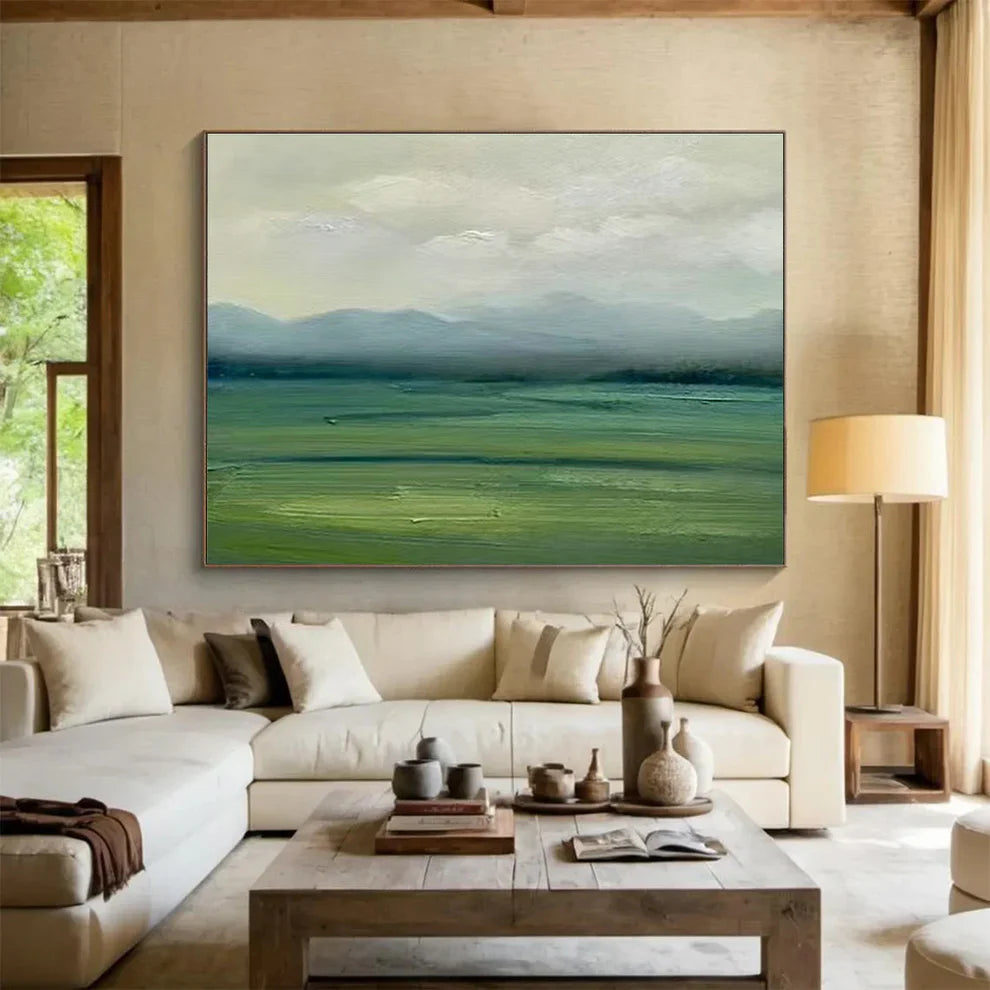
The Essence of Minimalist Painting - Exploring Simplicity in Art
Share
Minimalist Painting stands as a defining movement within contemporary art, characterized by radical simplicity, pure abstraction, and a focus on essential forms. Rooted in the mid-20th century, this art style emerged as a reaction against the emotional intensity and complexity of Abstract Expressionism, offering instead an elegant, stripped-down aesthetic that invites contemplation and clarity. To experience some exquisite minimalist artworks, visit Minimalist Painting.
Minimalist painters embrace simplicity by using large blocks of color, often monochromatic or limited palettes, with geometric shapes and clean lines dominating their compositions. The brushwork is subtle or sometimes erased entirely, creating smooth, flat surfaces that emphasize the materiality of the canvas itself. This approach encourages viewers to focus on spatial relationships, color theory, and the pure visual elements without distraction.

Renowned Artists and Iconic Works
Several seminal figures defined Minimalist Painting with their pioneering works:
-
Ellsworth Kelly is celebrated for his exploration of form and color, creating irregularly shaped canvases with broad expanses of vibrant, flat color. His art is admired for its clarity and spatial harmony.
-
Frank Stella revolutionized minimal painting with his Black Paintings series, where he focused on the literal presence of the artwork, stripping away any illusion or representation.
-
Donald Judd, though better known for sculpture, influenced Minimalist Painting through his emphasis on simplicity and object presence, advocating for “the thing as a whole.”
-
Josef Albers made monumental contributions with his Homage to the Square series, exploring color interactions through nested colored squares in precise geometry.
-
Robert Mangold focused on the two-dimensionality of painting while altering canvas shapes, underlining the minimalists’ exploration of painting as both form and surface.
-
Earlier pioneers such as Kazimir Malevich laid groundwork in abstract minimalism with landmark works like Black Square and White on White, radically reducing painting to geometric essentials.
Understanding Minimalism’s Roots and Impact
Minimalist Painting developed in the 1950s and 1960s, alongside Minimal Art broadly, which included sculpture and installation. It was a conscious departure from emotional abstraction towards objectivity and reduction. The movement drew inspiration from European modernists like Piet Mondrian and Kazimir Malevich, as well as American Post-Painterly Abstractionists.
This movement is not just about visual austerity but also underlines conceptual clarity—the painting is what it is without metaphoric or narrative overlays. Minimalist painting has significantly influenced interior design, where it acts as a form of quiet luxury, adding calm and sophistication to spaces.

Further Reading and Related Resources
To explore Minimalism in depth, these authoritative resources provide excellent insights and examples:
-
The Art Story’s Minimalism Movement Overview highlights the movement’s history and key artists.
-
Contemporary Art Issue’s comprehensive piece on Minimalist Painting covers stylistic and philosophical fundamentals.
-
Tate’s explanation of Minimalism discusses the broader art movement’s development and significance.
-
Sotheby’s guide on Minimalism offers detailed history and artist profiles.
-
Smarthistory’s Introduction to Minimalism provides an accessible overview of the movement’s principles.
Frequently Asked Questions (FAQ)
What defines Minimalist Painting?
Minimalist Painting is characterized by extreme simplicity, use of geometric shapes, limited color palettes, large color fields, and a focus on the painting as an object without emotional or narrative content.
Who are the key figures in Minimalist Painting?
Notable artists include Ellsworth Kelly, Frank Stella, Donald Judd, Josef Albers, Robert Mangold, and the early abstract pioneer Kazimir Malevich.
How did Minimalist Painting influence modern art and design?
It introduced a new visual language centered on clarity, materiality, and reduction that impacted sculpture, installation, and interior aesthetics centered on calm and simplicity.
Where can I find quality Minimalist Paintings online?
A curated selection can be explored at Minimalist Painting.
Is Minimalist Painting only about visual simplicity?
While it emphasizes visual reduction, minimalist painting also engages conceptual clarity, focusing on the artwork’s presence and material nature rather than representational content.
